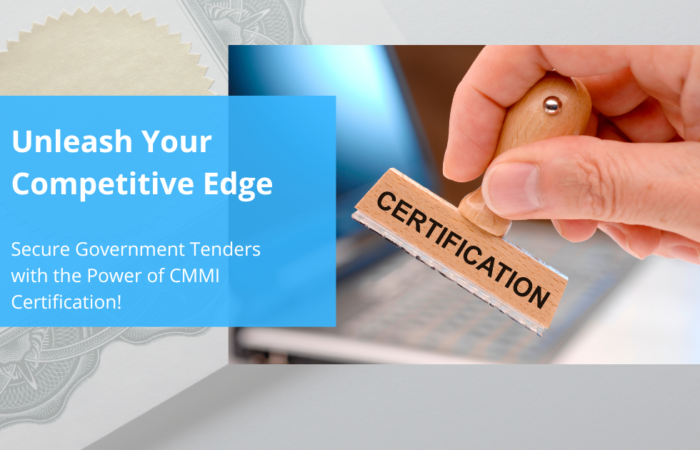Unlocking the Potential of CMMI Certification: Strategies for Organizational Success

Introduction
In today’s competitive business environment, organizations must continuously refine their processes to stay ahead. Capability Maturity Model Integration (CMMI) certification offers a proven framework for achieving process excellence and driving organizational success. CMMI certification not only enhances operational efficiency but also positions organizations to achieve their strategic goals more effectively. This article explores how organizations can unlock the full potential of cmmi certification through strategic implementation and best practices.
Understanding CMMI Certification
What is CMMI?
Capability Maturity Model Integration (CMMI) is a structured approach to improving organizational processes and performance. Developed by Carnegie Mellon University’s Software Engineering Institute (SEI), CMMI provides a model for process improvement applicable across various domains, including software development, services, and product manufacturing. CMMI certification is divided into five maturity levels, each representing a different stage of process maturity:
- Level 1: Initial – Processes are unpredictable and reactive, relying heavily on individual effort.
- Level 2: Managed – Processes are planned, documented, and executed according to established policies.
- Level 3: Defined – Processes are well-characterized and standardized across the organization.
- Level 4: Quantitatively Managed – Processes are measured and controlled using statistical techniques.
- Level 5: Optimizing – Focus is on continuous process improvement through incremental and innovative advancements.
The Value of CMMI Certification
Achieving CMMI certification offers significant benefits, including improved process efficiency, enhanced quality, and a competitive edge in the marketplace. Certification signals a commitment to excellence and provides a structured pathway for continuous improvement. Organizations that invest in CMMI certification can unlock their potential by optimizing processes, managing risks effectively, and driving long-term success.
Strategies for Unlocking the Potential of CMMI Certification
To fully leverage CMMI certification, organizations should adopt strategic approaches that align with their goals and objectives. Here are key strategies for unlocking the potential of CMMI certification:
Align CMMI with Organizational Goals
Integrate CMMI with Business Strategy
Align CMMI objectives with the organization’s overall business strategy. Ensure that process improvement efforts are directly linked to strategic goals, such as enhancing customer satisfaction, increasing market share, or improving operational efficiency. Integrating CMMI with business strategy helps ensure that process improvements contribute to achieving broader organizational objectives.
Set Clear Goals and Objectives
Define clear, measurable goals and objectives for the CMMI certification process. Establish key performance indicators (KPIs) to track progress and measure success. Clear goals and objectives provide direction and focus, helping to prioritize efforts and allocate resources effectively.
Foster Leadership Support
Secure Executive Buy-In
Gain support from top management to drive the CMMI certification effort. Executive buy-in is essential for securing necessary resources, championing the initiative, and ensuring alignment with organizational priorities. Leadership support fosters a culture of commitment to process excellence and continuous improvement.
Build a Strong Leadership Team
Assemble a leadership team responsible for overseeing the CMMI certification process. This team should include representatives from key departments and stakeholders who are committed to driving process improvements. A strong leadership team ensures effective coordination and accountability throughout the certification journey.
Invest in Training and Development
Provide Comprehensive Training
Invest in training programs to equip employees with the knowledge and skills needed for successful CMMI implementation. Training should cover CMMI concepts, methodologies, and best practices. Comprehensive training ensures that employees understand their roles and responsibilities in the certification process.
Promote Continuous Learning
Encourage a culture of continuous learning to keep employees updated on the latest CMMI developments and process improvement techniques. Ongoing education helps maintain high standards and adapt to evolving industry trends. By investing in continuous learning, organizations can sustain process excellence and drive innovation.
Implement Robust Process Management
Define and Document Processes
Develop and document processes that align with CMMI requirements. Ensure that processes are well-defined, standardized, and practical for implementation. Clear and actionable process documentation is essential for achieving consistency and effectiveness in process execution.
Standardize Processes Across the Organization
Ensure that processes are standardized across the organization to achieve uniformity and consistency. Standardization helps eliminate redundancies, reduce variability, and improve overall efficiency. Implementing standardized processes also facilitates easier monitoring and measurement of performance.
Monitor and Measure Performance
Establish Performance Metrics
Define key performance metrics to monitor and measure process performance. Use data-driven insights to assess the effectiveness of processes and identify areas for improvement. Performance metrics provide valuable information for making informed decisions and driving continuous improvement.
Conduct Regular Reviews
Perform regular reviews of process performance to assess progress and identify any issues. Use performance data to make adjustments and refine processes as needed. Regular reviews help ensure that processes remain effective and aligned with CMMI standards.
Embrace Continuous Improvement
Promote a Culture of Improvement
Foster a culture of continuous improvement within the organization. Encourage employees to contribute ideas for process enhancements and promote innovative thinking. A culture of improvement helps drive ongoing refinement and adaptation to changing market conditions.
Implement Incremental Changes
Adopt an incremental approach to process improvement by implementing small, manageable changes over time. Incremental changes allow for continuous refinement and reduce the risk of disruptions. Focus on making gradual improvements that contribute to long-term success.
Conduct Internal Audits and Assessments
Perform Internal Audits
Conduct regular internal audits to assess compliance with CMMI requirements and identify any gaps. Internal audits help ensure that processes are being followed correctly and provide insights for corrective actions. Regular audits are essential for maintaining process excellence and readiness for external appraisals.
Use Assessment Results for Improvement
Leverage assessment results to drive process improvements and address any identified issues. Use audit findings to refine processes, update documentation, and enhance overall performance. Continuous improvement based on assessment results helps sustain high standards and achieve certification goals.
Prepare for External Appraisals
Select an Accredited Appraiser
Choose an accredited CMMI Lead Appraiser to conduct the formal appraisal. The lead appraiser will evaluate your organization’s processes, documentation, and implementation to ensure compliance with CMMI standards. Selecting a reputable appraiser is crucial for a credible and successful appraisal process.
Prepare Thoroughly for the Appraisal
Ensure that your organization is thoroughly prepared for the external appraisal. Review documentation, conduct mock interviews, and address any potential issues before the appraisal. Thorough preparation helps ensure a smooth appraisal process and increases the likelihood of a successful certification outcome.
Maintain Certification and Continuously Improve
Adhere to CMMI Standards
After achieving certification, maintain compliance with CMMI standards by adhering to established processes and practices. Regularly review and update processes to ensure continued alignment with CMMI requirements. Ongoing adherence to standards helps sustain certification and drive continuous improvement.
Focus on Long-Term Success
Commit to long-term success by continuously refining processes and embracing best practices. Monitor industry trends, adopt new technologies, and seek opportunities for innovation. By focusing on long-term success, organizations can maximize the benefits of CMMI certification and achieve sustained excellence.
Challenges and Solutions
While cmmi certification offers numerous benefits, organizations may encounter challenges during the certification process. Here are common challenges and strategies to address them:
Resistance to Change
Employees may resist changes to established processes. Overcome resistance by involving employees in the improvement process, clearly communicating the benefits of changes, and providing support through training and resources. Engaging employees and addressing their concerns fosters a positive attitude towards process improvements.
Resource Constraints
The certification process can be resource-intensive. Allocate necessary resources early in the process and prioritize key activities to support the certification effort. Efficient resource management helps ensure that the certification process remains on track and avoids disruptions.
Complexity of Processes
Documenting and standardizing complex processes can be challenging. Break down processes into manageable steps and use visual aids like flowcharts to simplify documentation. Involve process experts to ensure accurate and practical process definitions.
Sustaining Improvements
Maintaining improvements requires ongoing effort. Establish a robust monitoring and feedback system to ensure continuous process refinement and adherence to standards. Regularly review and update processes to ensure they remain effective and aligned with organizational goals.
Conclusion
Unlocking the potential of CMMI certification requires a strategic approach that aligns with organizational goals and embraces best practices. By investing in training, fostering leadership support, and implementing robust process management, organizations can achieve significant improvements in efficiency, quality, and competitiveness. Embracing continuous improvement and maintaining certification through regular reviews and updates ensures long-term success and sustainability. CMMI certification is not just a milestone but a pathway to achieving process excellence and driving organizational success in today’s dynamic business environment.








